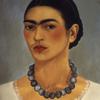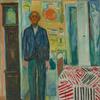Artist and Empire at Tate Britain Boldly Explores Imperial Visual Culture
- July 20, 2015 12:53
Some 200 works from 55 lenders will be featured in a fall show at Tate Britain that was carefully researched for four years. Artist and Empire, on view from November 25, 2015 - April, 10, 2016, aims to present a broad artistic view of British Imperialism, including the painful parts.
Elizabeth Butler’s The Remnants of an Army: Jellalabad, January 13th, 1842 – completed in 1879, during the second Anglo-Afghan war – was once one of the most important paintings in the entire Tate collection but has not been seen at the gallery for more than 50 years, reports the Guardian.
Lady Butler's painting depicts a forlorn soldier on horseback. He was said to be the lone survivor of 4,500 soldiers massacred on retreat from Kabul.
“Butler belonged to a group of thinkers who were critical of British colonial policy,” said curator Alison Smith. “This painting was partly produced to convey the idea of cycles – British history repeating itself, often with disastrous consequences. This was not picked up in the press or the wider realm, it was seen to be a heroic image of endurance and survival at the very edges of the empire.”
A statement from the Tate provides an overview:
Drawn from major public and private collections across Britain, the exhibition will investigate the different routes by which works of art were created and collected. For the first time, historic paintings by such artists as George Stubbs, Anthony Van Dyck, Johan Zoffany, Lady Butler and Thomas Daniell will be shown with works including Indian miniatures and Maori artefacts, offering critical insight into how each was made, collected and categorised. The encounters between cultures will also be explored, from the East India Company’s patronage of Mughal painting during a period of cultural assimilation, through to the long disregard of Aboriginal art which went hand-in-hand with the denigration of indigenous Australian cultures.
Starting in the 16th century, Artist and Empire will show how artists mapped the world and its resources. From Lambert and Scott’s 1731 painting of Bombay harbour to John Montresor’s 1766 Plan of the City of New York, these works depicted and claimed territories around the globe. Carefully staged paintings of international events also manipulated the sympathies of audiences in Britain, dramatising conquests, treaties and ‘last stands’. The exhibition will also bring together grand portraits of key political figures by Augustus John and Joshua Reynolds and will examine how they were presented in ‘exotic’ or hybrid costume, showing how images reflected bonds of union but also established differences between cultural groups.
Artist and Empire will demonstrate how in the 20th century artists around the world challenged Imperial ideology, and how contemporary artists like Sonia Boyce and Judy Watson reflect on these histories today. National art movements in places such as Bengal and Nigeria accompanied growing demands for independence, as reflected in the work of Jamini Roy and Uzo Egonu. Contemporary British artists, including Hew Locke and Andrew Gilbert, offer fresh interpretations of colonial imagery and confront the problematic legacies of Empire in the present day.












100x100_c.jpg)







